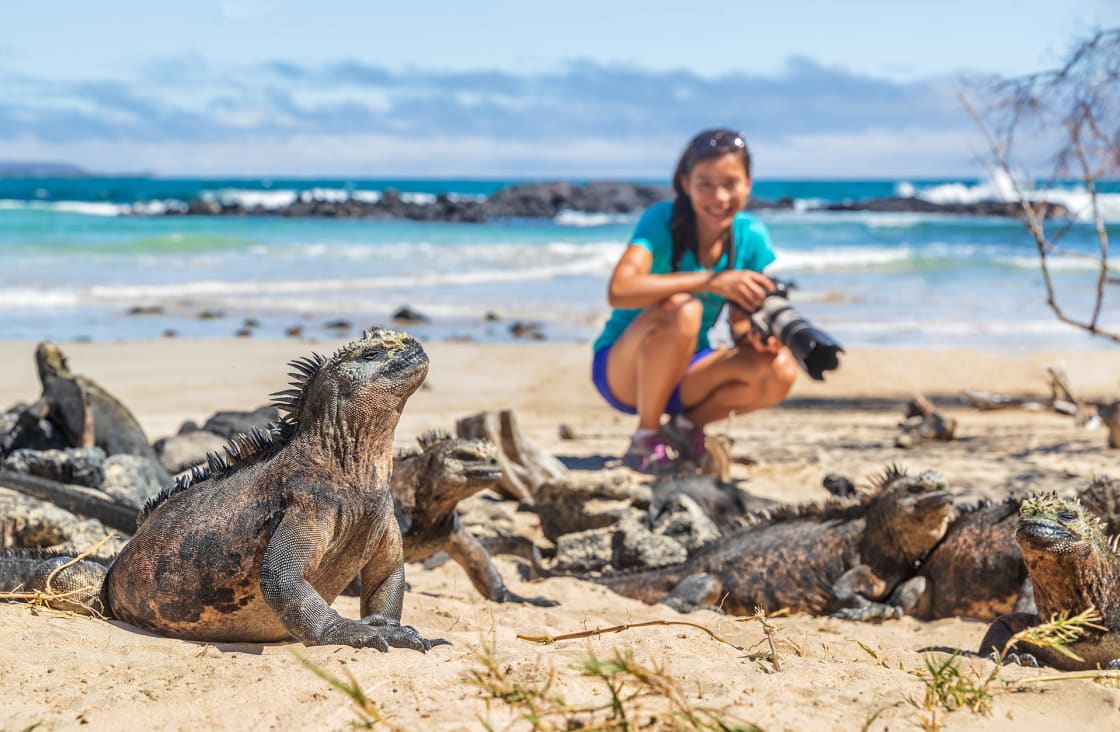
A trip to the Galapagos Islands is a true once in a lifetime experience. So coming away with some incredible shots that capture their unique essence will help you relive the experience for years to come. But with such an unusual and extraordinary destination comes a few special considerations that will help ensure you capture the perfect image, as well keep you and your gear out of harm’s way.
To help out, we’ve compiled a list of the top tips for best photography practices in the Galapagos.
The unique, abundant and accessible wildlife of the Galapagos are its biggest draw and will likely form the primary focus for most photographers. When shooting animal subjects, there are a few considerations to bear in mind that will help you achieve great results, whilst maintaining respect for the wildlife.
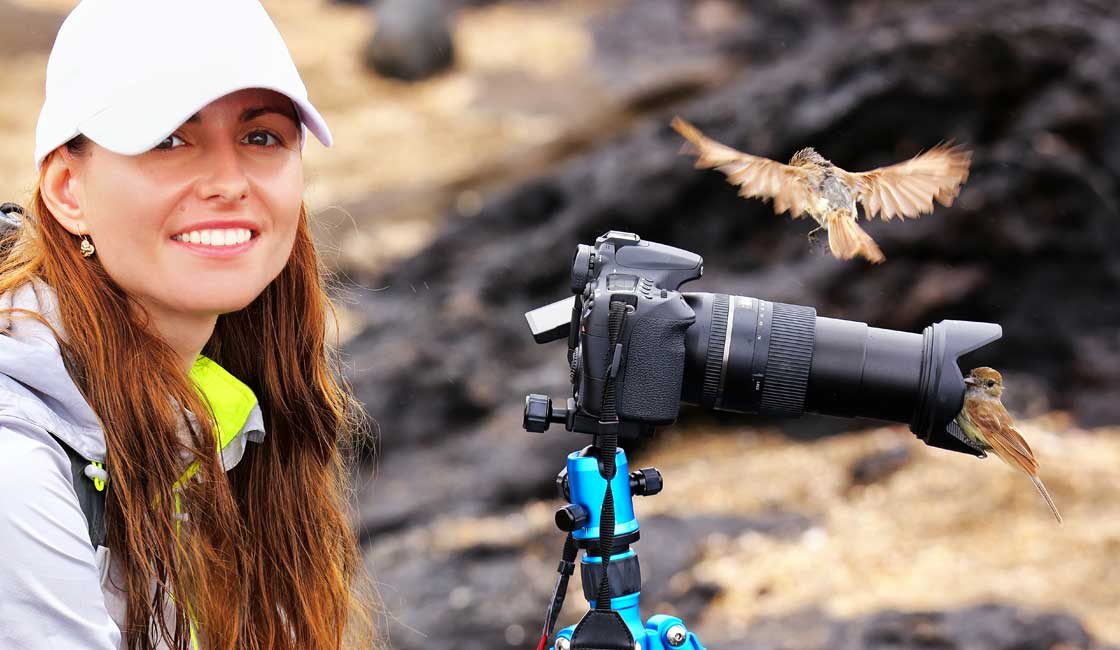
Let them get close
Animals on the Galapagos are fearless, and many won’t hesitate to get close or may fail to move out of your path. Whilst this provides some amazing opportunities to shoot close-up, there is a six foot (two meter) rule in place that regulates the distance between tourists and wildlife that’s important to maintain. Because the wildlife does get so close, you won’t need a powerful zoom; a 100-400mm lens will work perfectly for most situations.
Whilst animals are to be found at every turn – and there’s also the additional consideration that your tour group may be on a tight schedule – it pays to be patient. Before snapping away, take the time to really observe and appreciate the behavior of the animals. Not only should this be the main reason for being there, it will also help you get to know your subject and subsequently capture more interesting shots, such as the comical interactions between blue-footed boobies. It’s also advisable not to rush around the wildlife. Always be sure to approach slowly, retreat with care and keep watching before hurrying onto the next spot.

Eye Level Of Your Model
A tried and tested technique for capturing great wildlife shots on the Galapagos is to get down on the ground. Much of the islands’ wildlife reside quite near to ground level, whether it be a sea lion basking on the sand, a colorful Sally Lightfoot crab, or a shuffling giant tortoise. Shooting down at your feet from a tall perspective can result in clinical, uninteresting shots. So don’t hesitate to scrabble around on the ground, get down at eye level and really stretch yourself (both literally and figuratively!) so that you come away with some creative compositions and capture a real sense of intimacy with the wildlife.
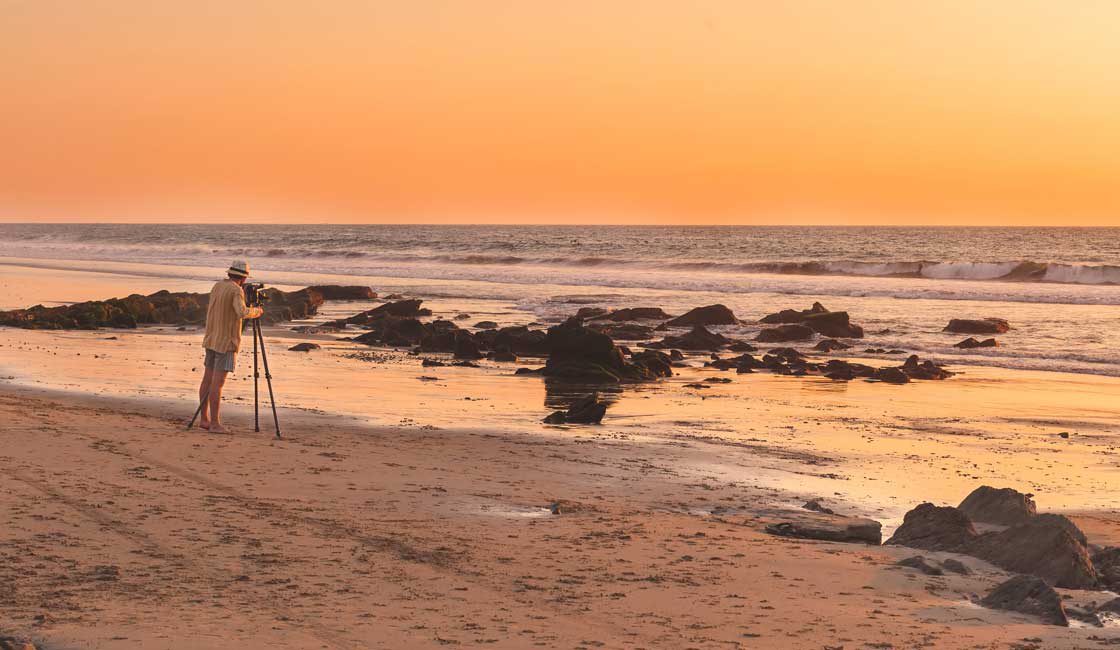
Sunset Light
Paying attention to the lighting is a universal rule for great photography no matter where you are. In the Galapagos, those who are serious about capturing shots in the best light will want to be on the islands for sunrise and sunset. It tends to be very bright during the middle of the day as the sun will be directly overhead. This can all too easily result in harsh photographs with sharp contrasts and black shadows unless you pay careful attention to the angles.
As the Galapagos is situated along the equator, sunrise and sunset will happen fast, so you’ll need to be ready. You’ll be rewarded with stunning, subtle golden light shining sideways to illuminate your subjects in all their detailed glory. Be sure to research timings, and perhaps consider joining a group geared towards photographers where you’ll be among the first to arrive on the islands and the last to leave.
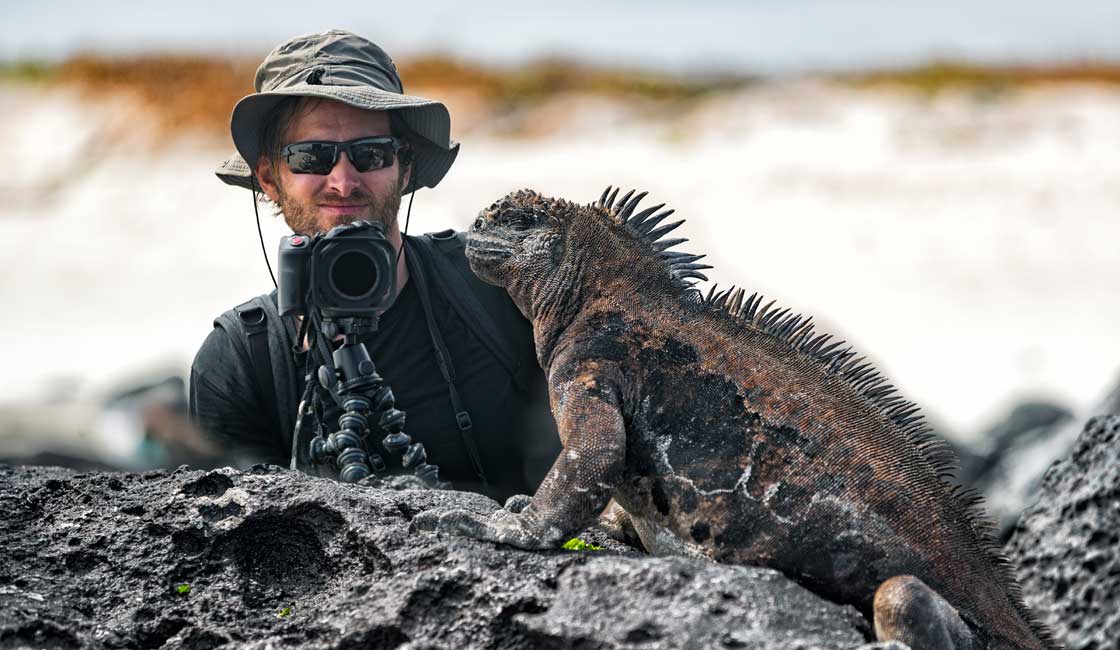
Face to face with Marine Iguana
There’s a strict “no flash” rule in operation in the Galapagos National Park, so be sure to switch yours off! It’s usually bright enough for this not to pose too much of an issue. However, if you’re in need of extra light, simply increase your ISO setting, or alternatively ask your guide if you’re permitted to use a reflector.
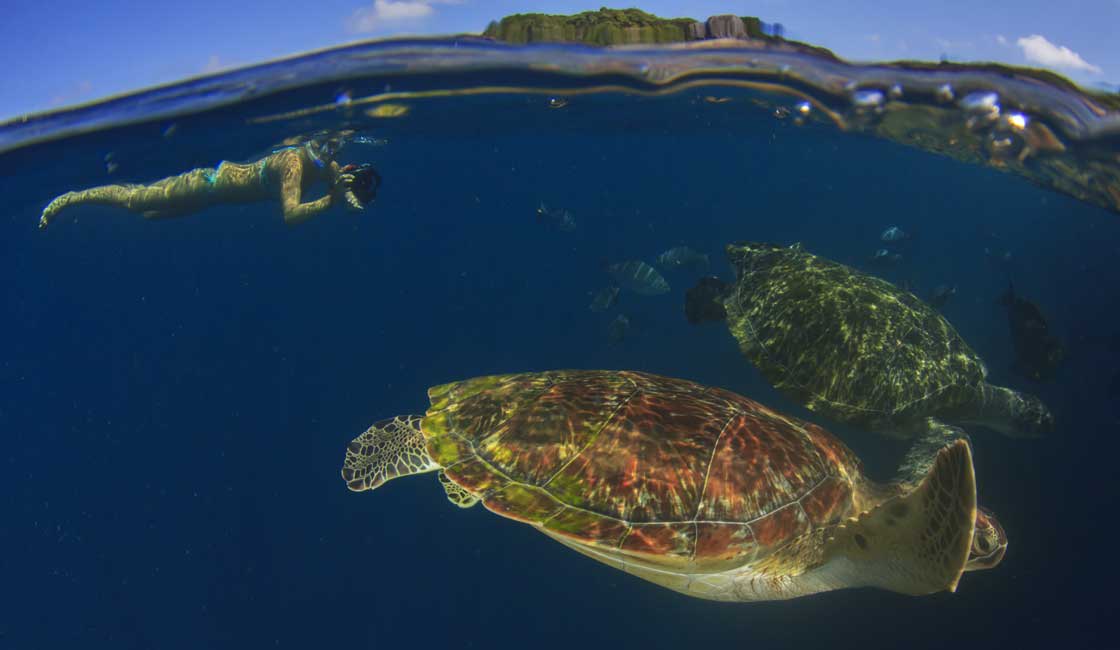
Snorkeling with turtles
The underwater world of the Galapagos is certainly not to be missed, and if you plan on capturing your water-based experiences through the lens, read on for some helpful tips.
Snorkeling provides an unparalleled opportunity to get up close and personal with a whole host of creatures in their natural environment. With the right gear, you’ll be able to capture truly mesmerizing shots of sea lions, penguins, sharks, rays, turtles and an array of colorful fish. We recommend taking an underwater point and shoot camera from Canon, Olympus or Panasonic, or either purchasing or renting housing for your DSLR system. Also bear in mind that wide-angle lenses work best for underwater shooting due to refractive errors.
Even if you’re not taking shots beneath the water, you’ll want to ensure your gear stays protected during your inevitable encounters with this watery world. Galapagos trips involve a lot of small boat transfers, as well as some “wet” landings. To be on the safe side, you may want to bring some waterproof dry bags which will save your camera in the event of accidental splashes or submersions.
A final point to mention is that anyone planning to undertake photography for professional purposes will need a special permit. You’ll need to submit a formal application to the Galapagos National Park Directorate and attain authorization at least 15 days prior to your scheduled arrival. For further details, contact the GNDP.
That sums up our top tips for photography in the Galapagos Islands. We hope this advice will enable you to capture fantastic shots that will serve as potent reminders of your wild encounters for years to come. If you’re also heading to the Amazon, be sure to check out our tips for rainforest photography, many of which also apply to the Galapagos. For more information or help to book your trip to the islands, please contact us.
While Rainforest Cruises aim to provide accurate and up-to-date information, we make no representations as to the accuracy or completeness of any information herein or found by following any link on this site. Rainforest Cruises cannot and will not accept responsibility for any omissions or inaccuracies, or for any consequences arising therefrom, including any losses, injuries, or damages resulting from the display or use of this information.




